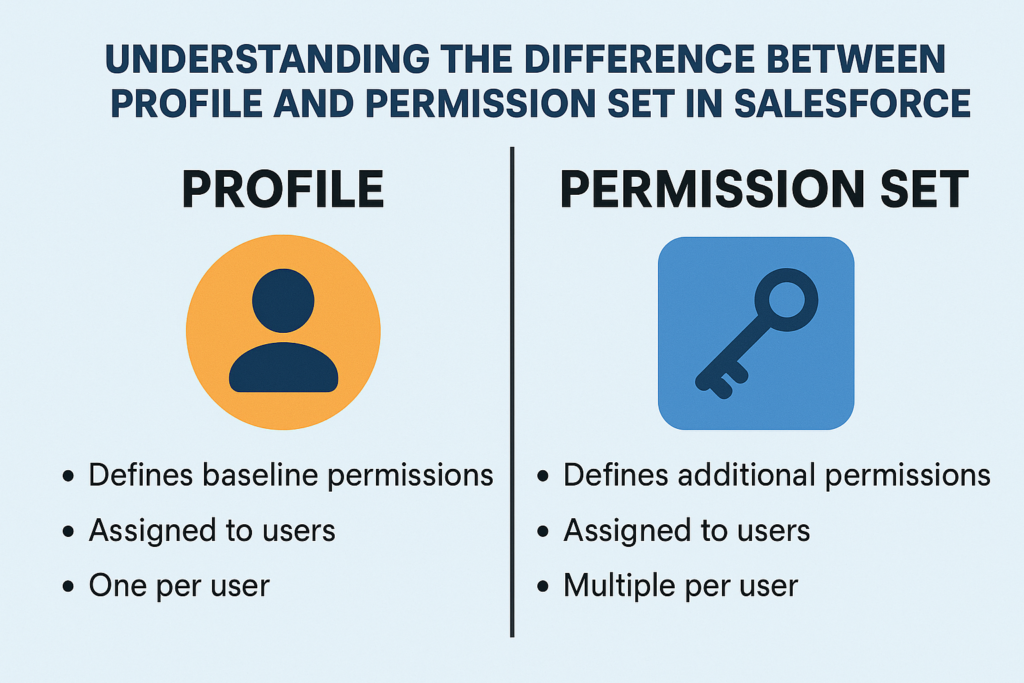Understanding the Difference Between Profile and Permission Set in Salesforce
Salesforce is all about data security and controlled access. Two major tools that Salesforce admins use to manage user permissions are Profiles and Permission Sets. While they might seem similar at first glance, they serve different purposes and are best used in complementary ways. Let’s break down their differences and understand when and how to use each.
What is a Profile?
A Profile in Salesforce is like a user’s baseline access. It defines what a user can do in the org from the moment their account is created.
- Key Characteristics:
- Every user must be assigned one profile.
- Profiles define:
- – Object-level permissions (CRUD)
- – Field-level security
- – App and tab visibility
- – Page layouts
- – Record types
- – Login hours and IP ranges
Think of it as the “default access” a user needs to do their job.
Example: A Sales User Profile might give access to Leads, Opportunities, and Accounts with the ability to create and edit them.
What is a Permission Set?
A Permission Set is like a booster pack. It allows admins to grant additional permissions to users without changing their profile.
- Key Characteristics:
- Users can have multiple permission sets.
- Used to grant temporary, specific, or cross-functional access.
- Ideal for assigning extra permissions to individuals or small groups.
- Cannot restrict access – only adds to what’s already provided via the profile.
Example: A user with the Sales User Profile can be given the Marketing Permission Set to also access Campaigns temporarily.
Profile vs. Permission Set: Key Differences
| Feature | Profile | Permission Set |
| Assigned to | One per user | Multiple per user |
| Purpose | Baseline access | Additional permissions |
| Use case | Define job roles | Grant exceptions or temporary access |
| Restrictive? | Yes (can limit access) | No (only adds access) |
| Login IP/time restrictions | Yes | No |
| Page layouts, Record Types | Yes | No |
| Can assign to permission sets | No | Yes (Permission Set Groups) |
Best Practices
- Use profiles to define core user types (Sales, Support, HR, etc.).
- Use permission sets to handle exceptions, cross-role responsibilities, or temporary access (e.g., beta testing a new feature).
- For complex access management, leverage Permission Set Groups for bundling multiple permission sets.
Conclusion
In summary, think of profiles as the foundation and permission sets as flexible extensions. They work best when used together to create a scalable and secure permission model in Salesforce.
Always remember:
Profiles = “Who you are”
Permission Sets = “What more you can do”

